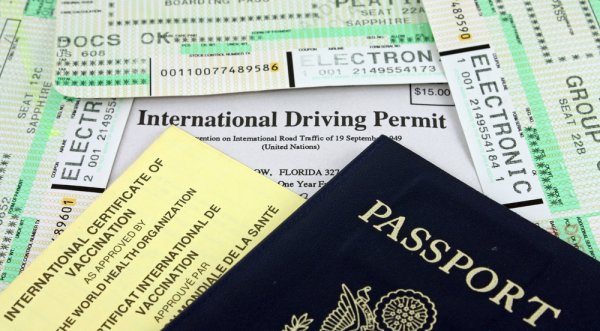Driving and Autos: Driving and Driver's License
Drivers operate their vehicles on the left-hand side of the road.
Requirements for Locals
Driver’s licenses are issued by the state government’s Regional Transit Office or Authority (RTO or RTA). The National Portal of India is a government website that contains details of the license application procedure: india.gov.in.The requirements for applying for a new license do vary slightly between states but all states recognize each other's licenses.
Initially all new applicants have to apply for a learner’s license, which is valid for six months. There are a number of full licenses covering all categories of driving, but the three most common are the motorcycle license, the light motor vehicle license (which covers cars, sedans, auto rickshaws, taxis, and sport utility vehicles), and the heavy motor vehicle license. Each license category is valid for 20 years from the date of issue or until the holder reaches the age of 50 (whichever is first).
Written and Road Test
There is some variation between states in the exact requirements for the driving test. To apply for the initial learner’s license, a learner driver must visit their local RTO facility and complete an application together with providing identification and proof of address. In most states a medical certificate is required indicating fitness to drive. A theory examination is given on the same day, but the new applicant must hold the license for at least a month before presenting for the practical test. The test is typically taken in an applicant’s own vehicle and the inspector will need to see the car’s insurance and registration documents. If the applicant does not own the vehicle, he or she must also provide a letter of consent from the registered owner.
Residence
You must be an Indian national or have a valid residency visa to obtain a driver’s license.
Age
You must be at least 18 years of age to apply for a license to drive a car. The minimum age for a motorcycle license is 16.
Identification
You must present a valid Indian identification document that confirms your address and age for any new application. Your photograph will be taken at the RTO facility.
Fee
There is an issuing fee for a new license, which is paid directly to the RTO facility.
Other Requirements
If you do not possess a medical certificate, you may be asked to undertake a medical with one of the medical staff at the offices.
Requirements for Foreigners
Driving Using a Foreign License
Policies on driving in India with a foreign driver’s license vary from state to state, but most foreigners who intend to stay in India for more than a year apply for a permanent driver’s license.
The International Driving Permit is also recognized in India. See below for information on obtaining an International Driving Permit.
Obtaining a Local License
Foreigners must follow the same procedures for locals, listed above, but are not be required to take the practical test. The fees are also the same as for a new applicant. In some states, a three-month probationary license is issued to foreign applicants. The license issued to a foreign resident expires on the same date as his or her visa; therefore you will need to apply again if you are extending your visa.
International Driving Permit
India is a member of the Geneva Convention on Road Traffic, which means that a valid International Driver's Permit (IDP) from a country that is also a member of this Convention can be used, if you do not have a valid Indian driver’s license. The IDP is valid for one year from the date of entry into India and must be issued from the same country as your original driver’s license.
An IDP includes your name, photo, and basic information in ten languages. When carried together with a foreign license, it can serve as local identification in addition to permitting you to drive. It is valid in over 150 countries. The IDP is only valid when carried in conjunction with a driver’s license issued by your home country.
Australia
If you are an Australian citizen, you must have a valid Australian driver’s license to get an IDP. The local Australian Automobile Association (AAA) office issues IDPs: www.aaa.asn.au/touring/idp.htm.
Canada
To get an IDP in Canada, you must be at least 18 years old and have a valid Canadian provincial driver’s license. The Canadian Automobile Association issues IDPs: www.caa.ca/idp.
France
French citizens should contact the Automobile Club Association to get an IDP in France: www.automobile-club.org.
Germany
German citizens with valid EU driver’s licenses may apply for an IDP with the Allgemeiner Deutscher Automobile-Club E.V. (ADAC): www.adac.de.
The United Kingdom
If you are a UK citizen, you can get an IDP from your local post office, the RAC (an automotive services company), or the Automobile Association (AA). You must be a resident of the UK, have a full UK driver’s license, and be at least 18 years old. For more information, visit the RAC at www.rac.co.uk, or the AA at www.theaa.com.
The United States
To obtain an IDP in the US, you must be over the age of 18 and have a valid US driver’s license. An IDP can be obtained from any Automobile Association of America (AAA) office or by mail if you are already overseas. For more information, visit the AAA website: www.aaa.com/vacation/idpf.html.
Copyright © 1993—2025 World Trade Press. All rights reserved.

 India
India 